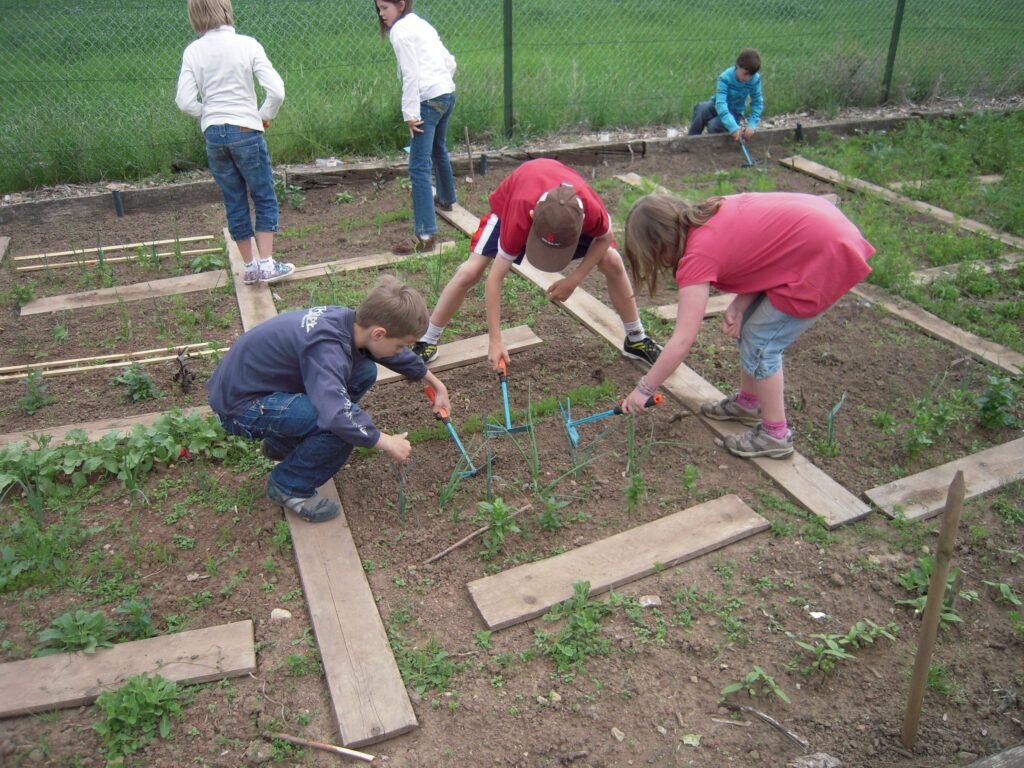
August is back to school month for millions of students across the country. As students, faculty and staff gather in school buildings of all types and sizes, there may be questions about how we best take care of our school buildings, so they take care of our students and others working in them. The whole idea of Green Schools seems to be a crossroads for several missions Green Home Coach, and myself personally have been working on.
Green – a holistic approach to a building and/or behavior that encourages health, safety and comfort. Green includes efficiencies in resource use, energy and water use, indoor environmental quality and the relationship between the building and the land where it is. We wrap the whole thing up with education and information to help the caretakers and occupants of the building take care of and optimize it.
Schools – Merriam-Webster defines a school as “a place or establishment for teaching and learning.” We usually associate a school to be both the people who experience the teaching, faculty, and learning, students, and the place, or building where said teaching and learning happen. As such, a school building becomes a vital part of a school. Our students and the dedicated people who educate them often spend a good chunk of their days in our school buildings, so we want them to be a safe, healthy space.
The whole idea of Green Schools was first introduced to me years ago through my involvement with the Missouri Gateway US Green Building Council *USGBC) when I lived in St. Louis. The USGBC says about a green school, “A green school is about more than curriculum, more than programming and more than bricks and mortar. It’s a school that supports global sustainability in every way. A green school begins with the future in mind, designing a learning experience for students that will prepare them to lead the world toward a healthier, cleaner, more sustainable future.” on their website https://www.usgbc.org/articles/what-green-school. It goes on to list the 3 pillars of a green school:
One year, I served as a community advisor to a group of elementary school students working on their green school project. It was a great way to get involved with our students.
When I moved to Oklahoma, I met Sara Ivey, the director of the Oklahoma Green Schools program. We did a fun Everyday Green Home podcast episode together too. https://greenhomecoach.com/oklahoma-green-schools-with-sara-ivey/.
The Oklahoma Green Schools Program stands as a beacon of sustainable education, fostering a deep appreciation for our environment. Spearheaded by a dedicated group of experts with diverse backgrounds, this initiative aims to empower schools across the state to adopt eco-friendly practices tailored to their unique circumstances.
Urgent Need for Change: Our society has evolved into one marked by wastefulness. Embracing a green lifestyle may feel instinctual to some, but for many, it’s a relatively new way of living. Recognizing the need to reshape our consumption habits, initiatives like the Green Schools Program bridge the gap between generations, propelling us toward resource-conscious living.
Fostering Early Awareness: Every school child’s journey to adulthood positions them as future consumers and decision-makers. Equipping them with a foundational understanding of resource origins empowers them to make informed choices that will shape a sustainable future.
Empowering the Whole: The Green Schools Program extends its reach beyond students, embracing the entire school community. By empowering both students and educators, the program fosters a culture of positive change within educational institutions.
Pathways to Sustainability: In collaboration with Project Learning Tree, the Green Schools Program encompasses five vital investigations:
Simple Steps, Profound Impact: Small changes can yield substantial results. A prime example is the energy saved by transitioning to LED lights, showcasing the transformative power of sustainable choices.
From “Lights Out Lunches” that maximize natural light usage to creative energy-saving solutions, schools participating in energy investigations devise innovative methods to minimize their environmental footprint.
Building Collaborative Momentum: Forming a Green Team serves as a cornerstone of the Green Schools Program. Engaging maintenance staff and school administrators from the outset ensures a collaborative commitment to positive change.
Unveiling Consumption Patterns: Encouraging schools to conduct trash audits unveils invaluable insights. Sorting recyclables from waste and assessing food wastage enables schools to understand their consumption patterns better.
The Oklahoma Green Schools Program provides a treasure trove of resources accessible to diverse educational settings, including homeschooling families seeking engaging activities for sustainable learning at home.
Oklahoma’s Green Schools Program epitomizes the journey toward a more sustainable future. By instilling eco-consciousness in schools and communities, this initiative paves the way for greener choices and a brighter tomorrow.
Get 5 Myths of Green Homes to reveal the true value that is commonly overlooked in virtually every home!
At Green Home Coach, helping you to create and discover healthier, more comfortable homes is what I do. I work with home professionals – designers, builders, realtors, and more; home owners and dwellers … just about anyone that works with a home in some way.
© Green Home Coach 2024 | An Oakes Creative House Site | Privacy Policy | Terms of Service
Photography by SLPhotography | Home page image provided by Chelsey Seaton Photography